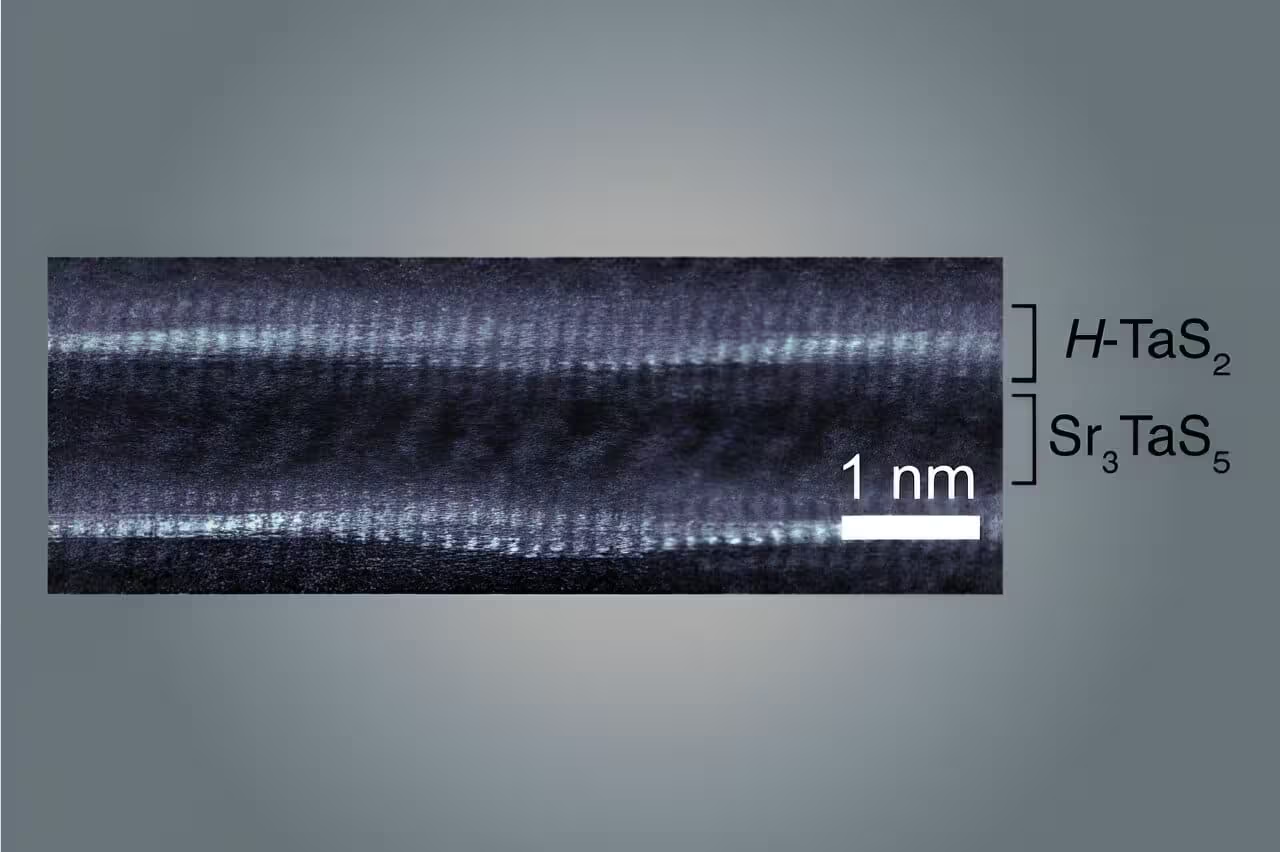Physicists from the US and Japan have designed and manufactured a material with a wave-like structure, extraordinary superconductivity and metallic properties. The material was theoretically pre-designed and showed all the planned properties after fabrication.
Two-dimensional materials consisting of several layers of atoms attract the attention of physicists with their wide possibilities of modification. Bends and twists at a small angle create a unique pattern (a moiré superlattice) that leads to the emergence of superconductivity and non-classical magnetism in the material.
But because of their atomic thickness, such material configurations are difficult to both create and study. The authors of the study used a different approach. They created the material using “rational design,” which is modeling materials with desired properties. The study was published in the journal Nature.
The researchers mixed strontium sulfide powders (Sr.S), tantalum (Ta) and sulfur (S) in the presence of strontium chloride (SrCI2), heated them to hundreds of degrees Celsius and relied on chemical reactions that naturally formed macroscopic crystals with the desired properties. Material parameters determine interactions at the atomic level. The researchers see the simplicity of the material formation as a breakthrough. The resulting material consists of layers H-TaS2 And SrTa2 S5.
The material’s structure is unusual – it consists of wavy layers that are billionths of a metre thick. The layers are large enough to create a large sample suitable for precise study. The large size makes it easier to study the atomic-level interactions that shape the properties of matter.
While there are other materials with wave-like atomic structures, the researchers think theirs is the most perfect: Nanoscale wave layers are uniform throughout the crystal in thousands of layers.
The new material resembles a puff pastry: it consists of an atomically thin layer of tantalum and sulfur layered on top of an interlayer of strontium, tantalum and sulfur. This structure is repeated thousands of times to form a macroscopic crystal.
The waves in the crystal arise because of the mismatch between the dimensions and types of crystal lattice of adjacent layers of the material. The layer without strontium bends to fit over another layer, creating waves. Imagine placing an A3 sheet of paper on top of a smaller A4 sheet. The first sheet will have to bend to fit. In the new structure, the sheets are only “fixed” at a few points, creating waves.
The nanoscale waves explain the material’s unusual properties. At a temperature of about three Kelvin, it becomes a superconductor and repeats the superconductivity waveform. Stronger in some places, weaker in others.
The material also has unusual metallic properties. It is easier for electrons to move down the troughs of the wave than up over the crests. Chemists and materials scientists planned a new material based on the properties they wanted to achieve. The results of the experiment yielded properties. This means scientists can create more materials with known properties instead of searching for the parameters of random materials.
Source: Port Altele
